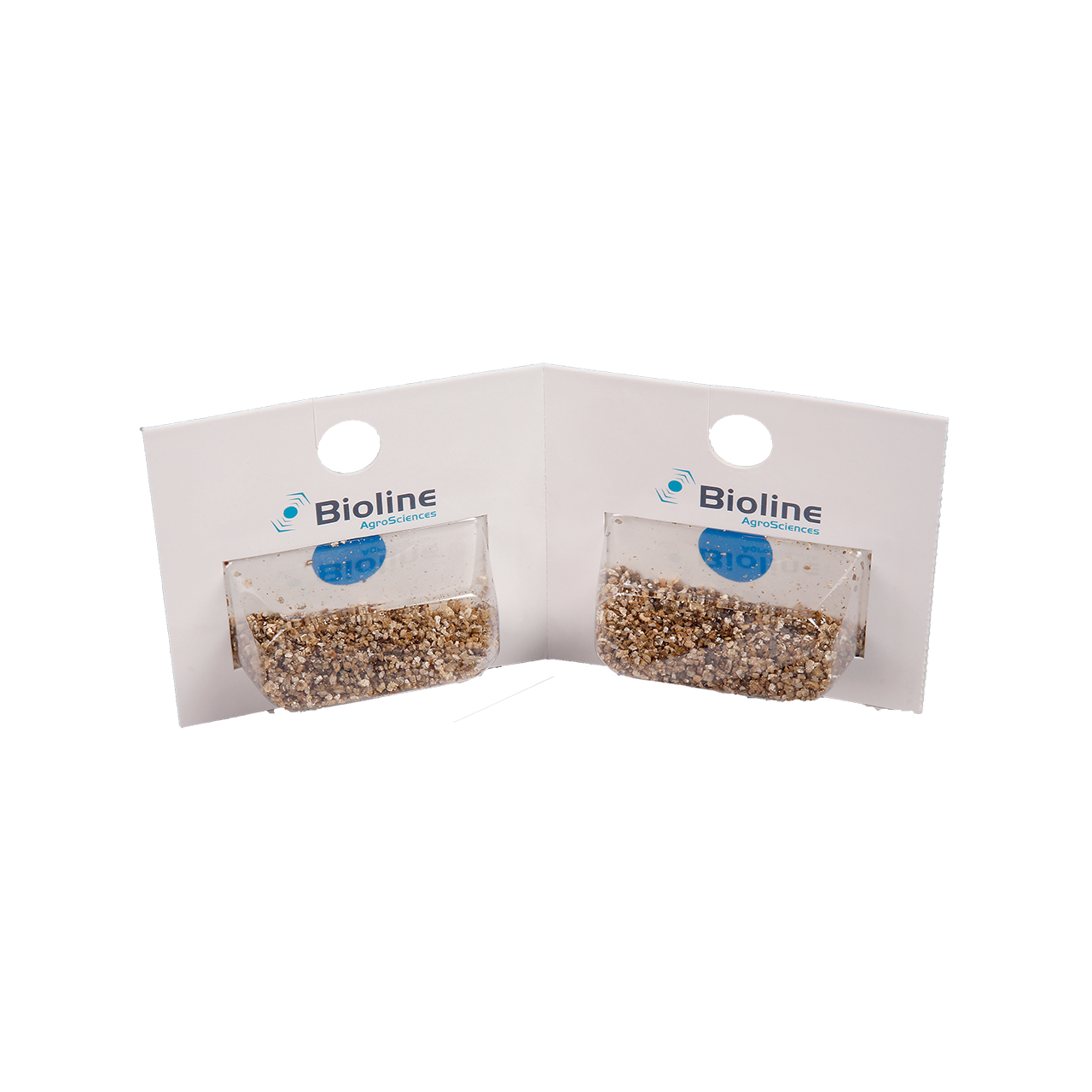Melon aphid or cotton (Aphis gossypii);
Black bean aphid (Aphis fabae);
Glasshouse-potato aphid (Aulacortum solani);
Potato aphid (Macrosiphum euphorbiae);
Green peach aphid (Myzus persicae);
Hemlock woolly (Adelges tsugae);
California Aphids (Euthoracaphisum).
Cucumber, tomato, sweet and hot peppers, eggplant, dill, parsley and lettuce, beijing cabbage, rose, melon and watermelon, green and red beans, grape, gerbera, calla lilies, cynerium, chrysanthemum, strawberries, ornamental bushes, and conifers.
0.5 litre – bottle;
Blisters.
Adult aphid midges are small (2-3 mm), delicate, gnats-like flies with long, dangling legs and long antennae. Eggs are oval, minute (about 0.1 mm by 0.3 mm), and orange. The larvae, which look like orange maggots, are tiny, growing through 3 instars from minute to 2-3 mm. Depending on their food source, they are bright orange to red, and their bodies are narrow towards the head. The larvae have strong “jaws” with which they grasp their prey.
Each female can live for 1 to 2 weeks and deposit about 70 orange eggs singly or in clusters on leaves among aphid colonies. The eggs hatch in 2 to 4 days.
Upright placed, orange, deposited on leaves among aphid colonies. Fertility is 70 eggs.
In greenhouses the larvae drop to the soil less than a week after hatching and burrow to pupate; adults emerge about 1 to 2 weeks later.
The adult is 2.5 to 3 mm in length, black with long, dangling legs and long antennae. Adult midges fly at night and are rarely seen; they feed on honeydew.
Aphidoletes feed on the larval pest instars, previously killing them by injecting a toxin that paralyzes the victim. The larva can kill from 3 to 50 aphids per day. In massive aphid colonies Aphidoletes larvae kill much more victims than they can eat.
| Bioagent name in Latin | Prevention | Doses of the application by infection degree | ||
|---|---|---|---|---|
| Small | Average | High | ||
| Aphidoletes aphidimyza | 0.4 ind/m2 | 1 ind/m2 | 5 ind/m2 | 10 ind/m2 |
| Frequency of application | 1 time | In a week | Weekly | Weekly |

Оставить комментарий